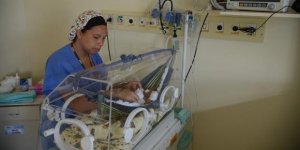| Health / Health News |
Protein involved in hearing loss recovery
The snail-shaped cochlea is an organ in the inner ear that helps us to hear sounds. Within the cochlea, thousands of sensory cells known as hair cells are arranged in inner and outer rows. Vibrations from sound waves cause these hair cells to move up and down and create an electrical signal that travels to the brain. Long or repeated exposure to loud noises can damage and even destroy hair cells. This noise-induced hearing loss can be permanent.

Loud and long-lasting sounds can damage sensitive structures in the inner ear. ![]()
A team led by Dr. Patricia White of the University of Rochester previously showed that a protein called Forkhead Box O3 (FOXO3) is expressed in both inner and outer hair cells.
FOXO3 is a transcription factor—a type of protein that plays a role in gene regulation. Upon noise exposure, FOXO3 travels into the hair cell nucleus, suggesting it might play a role in the protective response to noise-induced damage. To test this hypothesis, the scientists used mice that had been genetically modified to lack the gene for FOXO3.
The scientists first explored the effect of noise on hearing. One day afterward, the researchers found that the mice lacking FOXO3 had become profoundly deaf.
The mice with FOXO3 also had hearing loss, but it was far less severe. Two weeks afterward, the mice lacking FOXO3 continued to have severe hearing loss, but the normal mice seemed to mostly recover their hearing.
The team examined the effect of noise on structural damage to hair cells and other parts of the cochlea. They found that FOXO3 is needed for outer hair cell survival after loud noise.
They linked the hearing loss in the FOXO3-deficient mice with outer hair cell loss and structural damage. Inner hair cells survived and appeared to be relatively undamaged. Finally, the scientists found FOXO3 in cochlear hair cells from a human cadaver, supporting the idea that it may also play a role in human hearing. (NIH)
YOU MAY ALSO LIKE





